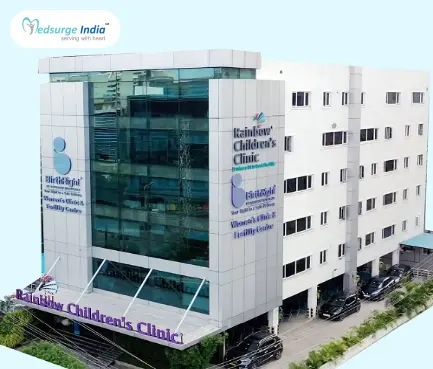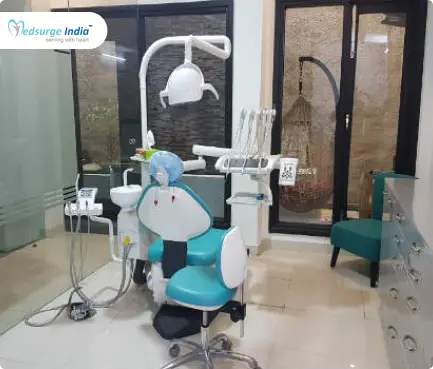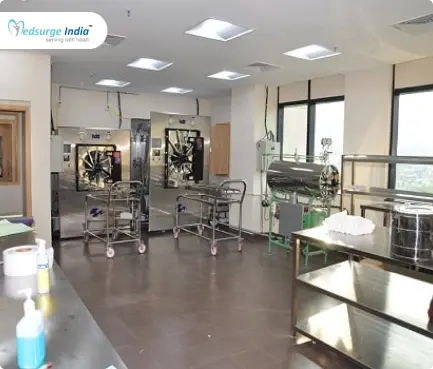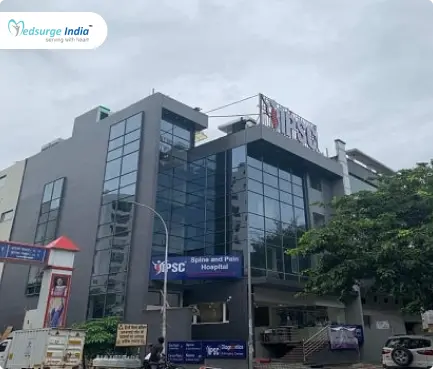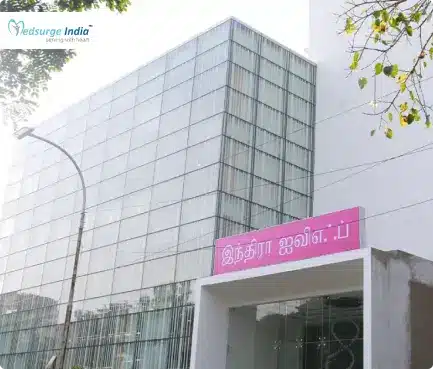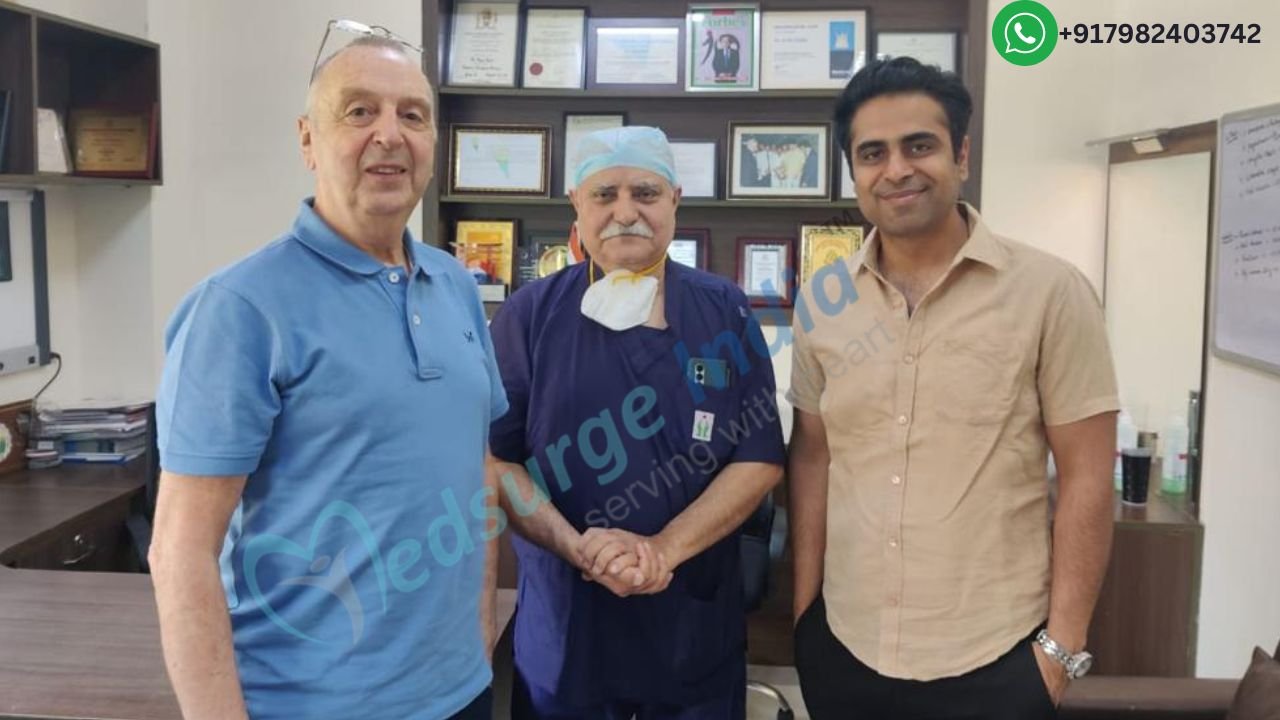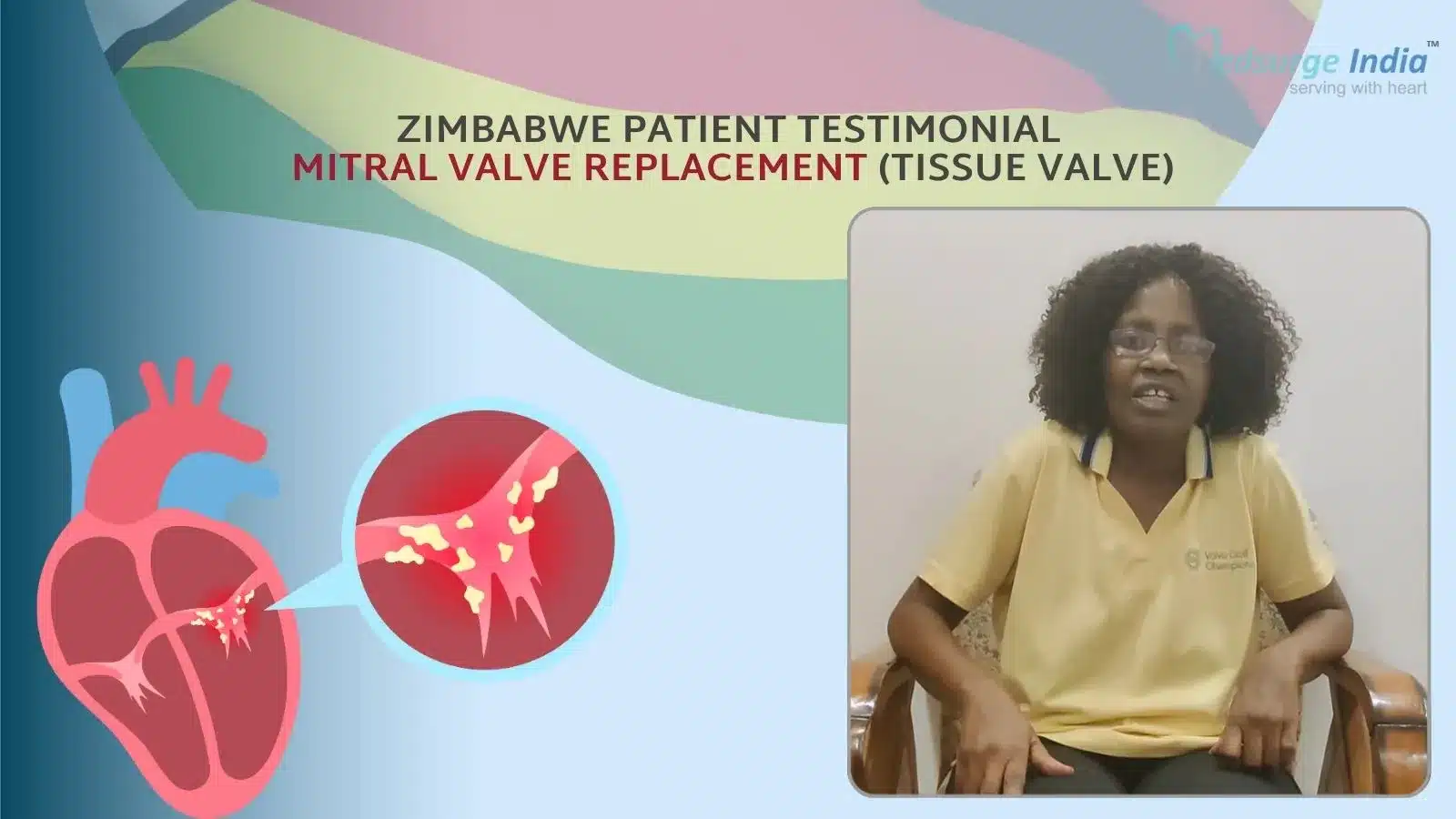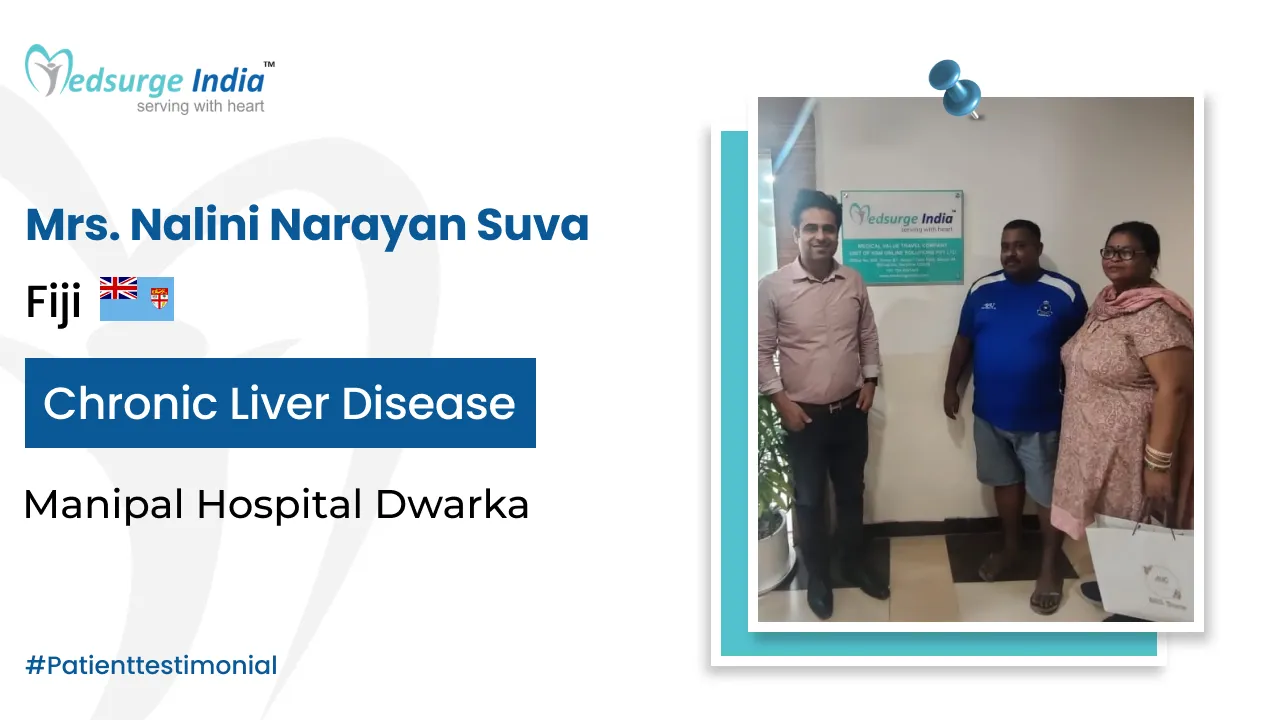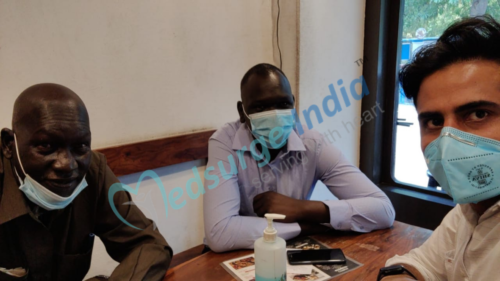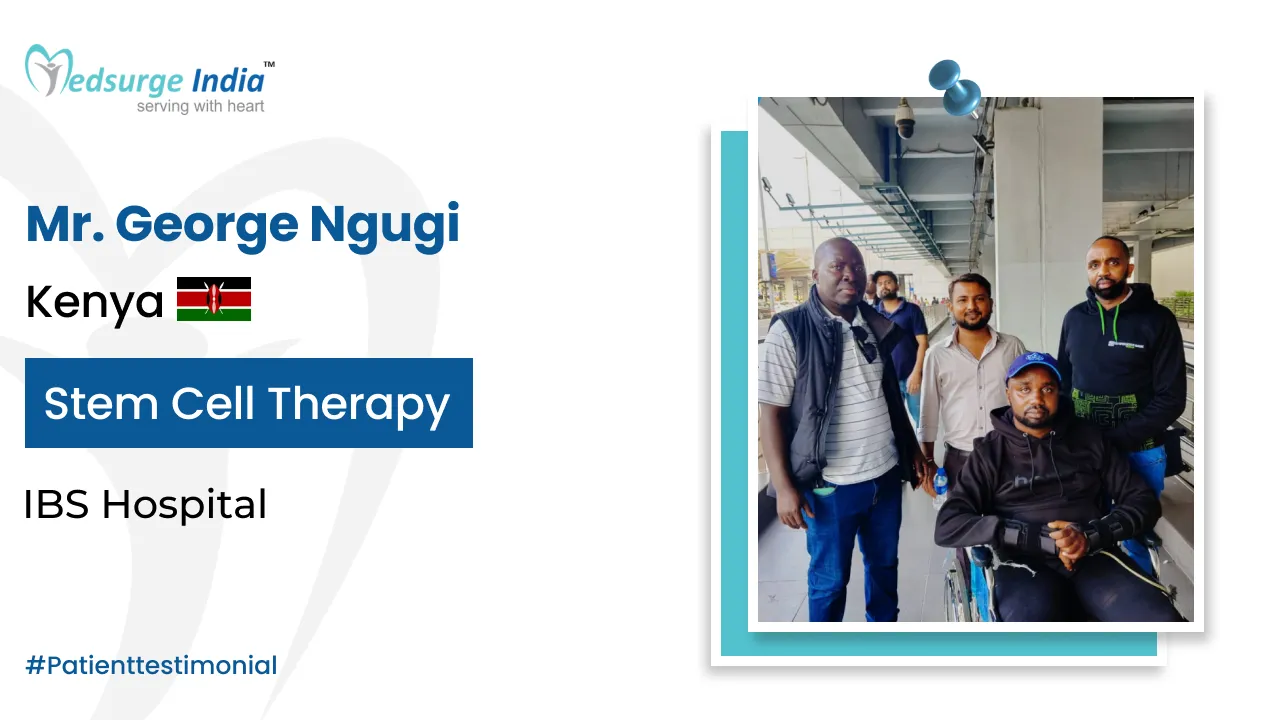
Most moles are harmless, but your healthcare professional may advise you to get one removed if it appears suspect. Moles can be removed for cosmetic reasons as well. Whether an individual chooses surgical excision or shaving to remove a mole, the procedure is quick and painless once the region is numb. You may have stinging or burning in the area for a few days following the surgery.
Mole removal in India is performed by a team of skilled dermatologists using cutting-edge technology that produces scar-free results. Laser treatment in India uses powerful bursts of light radiation to break down the melanin pigment clump in the skin, gradually removing the moles.
The laser treatment for mole removal cost in India and surgical excision may be less with respect to other European countries. Furthermore, the total removal of the mole cells necessitates two or three surgical procedures, increasing the cost of the treatment plan.
What is Mole?
Moles, which can range in color from your original skin tone to pink, brown, or black, commonly appear in your childhood or teenage. Darker moles are more common in people with darker hair or skin than in people with lighter hair or skin. Moles can be flat or elevated from the skin’s surface. Your doctor may refer to your mole as a nevus or a group of moles as nevi.
By reaching adulthood, you should have about 10-40 moles. Some moles grow slowly and gradually lighten or disappear. Most moles are harmless, but if you have any concerns about the look of a mole, or if it changes color or shape, becomes itchy, or bleeds, you should consult your healthcare professional.
Moles can sometimes be skin cancer or precancerous. Contact your healthcare practitioner if your mole is itchy, bleeds are not round or oval, or changes in appearance.
What Is Mole Removal Surgery?
Your dermatologist will shave or cut a mole to remove it from your skin during a mole removal surgery in India. A dermatologist is a medical specialist who specializes in the diagnosis and treatment of skin problems. It’s usually an immediate outpatient treatment that allows your doctor to check the mole for skin cancer. Moles are also removed for cosmetic purposes by certain people.
The majority of moles do not require treatment. However, if you are dissatisfied with the way your mole looks or feels, you should consider having it removed. If you are concerned about a mole, consult your doctor. Moles are often removed if your provider feels they are malignant or for cosmetic reasons.
Mole Removal Cost in India
Mole Removal Cost in India ranges between Rs. 3000 to Rs. 10,000. It typically includes necessary preoperative tests, the patients condition of its eyes and the type of surgery itself. However, please note that accommodation and transfers are not included in this cost.
Cost of Mole Removal in Different Cities in India
| Cities | Starting Price |
| Delhi | USD 3000 |
| Gurgaon | USD 3200 |
| Noida | USD 3000 |
| Mumbai | USD 3400 |
| Hyderabad | USD 3000 |
| Chennai | USD 3100 |
| Kolkata | USD 3000 |
| Bangalore | USD 3600 |
Note: Keep in mind that the above-mentioned cost provided is solely for the treatment. The overall cost of Mole Removal in India will be determined based on several factors.
Factors That Can Affect Mole Removal Cost in India
Various factors can affect the cost of Mole Removal in India. Your budget is greatly impacted by numerous elements that fail under pre and post-treatment costs. Below are the various factors that can affect the cost of Mole Removal in India.
- Medication costs: Certain medicines can influence the overall cost of the treatment.
- Patient Condition: The complexity of the disease along with the patient’s overall health can affect the duration of treatment, impacting the cost.
- Duration of treatment: Longer treatment courses involving multiple visits can lead to higher cumulative costs.
- Geographical location: Cost can vary widely depending on the region in India.
- Hospitalization expenses: The length of hospital stay and the level of nursing care required by the patient can add to the treatment expenses.
- Government policies and subsidies: Government healthcare schemes and subsidies can reduce out-of-pocket expenses for patients, affecting the affordability of the treatment.
- Medical tourism packages: Curated packages for international patients can include various services at a bundled cost, influencing the overall expense of treatment in India.
- Hospital reputation and infrastructure: Prestigious hospitals with state-of-the-art facilities may charge more for their services.
- The expertise and experience of medical professionals: Plastic or cosmetic surgeons with extensive experience and recognition often command higher fees, contributing to the treatment cost.
- The type and frequency of diagnostic procedures: Regular monitoring with advanced imaging and laboratory tests can increase treatment costs due to the high price of these diagnostic methods.
- The choice of treatment modality: Opting for newer or more advanced treatment options or precision medicine can be more expensive than traditional approaches.
Mole Removal Cost in India offers exceptional medical services and facilities to patients who come for treatment in India also their facilities rival those of well-known healthcare centers worldwide. Accommodation, meals, and transportation expenses are also covered. Furthermore, a foreign patient can save up to 30-40% of the Mole Removal cost in India when compared to their native countries.
There Are Two Types of Moles Removal:
Typical Mole Removal
Typical moles are spherical, flat, or slightly elevated in color, and retain their shape and size over time. However, if your mole appears unusual (dysplastic), your doctor may advise you to have it removed so that tests can be performed to identify whether it is cancer (malignant) or not (benign).
Cosmetic Mole Removal
You may despise the way your mole looks or feels, whether it was born with it or grew over time. Discuss your concerns with your healthcare physician if you have a mole that concerns you. Do not attempt mole removal at home. Having a medical professional remove a mole is safer, and you’ll be delighted with how you look when you recuperate.
What Are the Types of Mole Removal Procedures?
When it comes to mole removal, your doctor or dermatologist may recommend the best method for you.
Shave excision: Shave excision is one of the most common ways dermatologists use to remove moles. After numbing the region, the mole will be removed with a sharp scalpel blade, with no stitches required. The mole has been “shaved” at a very superficial level. The procedure usually takes less than a minute and is relatively painless.
Surgical Excision: Excision entails cutting around the mole, removing the entire thickness of the skin, and then stitching the region shut. This will certainly leave a scar, but it will be an imperceptible line, and the mole will be less likely to reappear as a result of this procedure.
Get Free Cost Estimation
Procedure
How Mole Removal Surgical Procedure is Performed?
Before the Procedure
- Before removing a mole, you should visit a dermatologist to ensure that it is not a melanoma.
- When the mole has been evaluated, it must be decided if brush removal or excision will produce the best results.
- With larger moles, shave removal is usually performed, which produces an excellent cosmetic outcome. Excision is usually performed on apartment moles.
- The treatment area will be cleaned before being numbed with a local anesthetic.
During the Procedure
Surgical Excision: Excision is a common method for removing moles. Your surgeon will use a scalpel to separate your mole from the rest of your skin after cleaning and numbing the region. Depending on the type of mole, a margin of good skin will be excised to verify that all abnormal cells are removed. The mole is then lifted away using forceps to grab the portion. Bleeding is typical, and before stitching the region back together, your surgeon may apply pressure to the area or burn (cauterize) it to stop the bleeding.
Shave Excision: Shave excision is another frequent method for removing moles. Your doctor may be able to remove a mole by shaving rather than cutting it. Shave excision can offer a tissue sample for study, and most people are pleased with the outcomes following healing. However, shave excision is ineffective for examining deep tumor margins and cannot be utilized to differentiate between different forms of skin cancer.
Your healthcare professional will use a single or double-bladed razor to delicately shave the growth off to the level of the skin around it for shave excision mole removal. They may mildly burn (cauterize) the region surrounding the removed mole in order to improve the appearance of any scars that form after healing.
Moles removed by shave incision are somewhat more likely to reappear than moles removed surgically.
After the Procedure
- No hospitalization is required, and the patient will most likely be discharged.
- After removing a mole, the wound area should be kept clean and a sterile bandage should be used.
- Patients may wash and shower the day after surgery, lightly dabbing the affected area dry.
- As the shave excision site heals over the next week or so, antibiotic ointment is applied every day.
- Sunscreen is also necessary to protect the surgery site from UV exposure for a year after the scar has faded.
- Simple mole removals usually do not necessitate a follow-up, but if anything unusual is seen in the biopsy report, you should reconsider the physician.
- Stitches are normally removed after 7 to 21 days.
- It is critical to prevent harm to the region.
How Long Does Recovery Take Following Treatment?
Moles can be surgically removed in an instant. However, the cut or scar left behind takes at least six months to blend with the skin. If the mole was quite large, the scars may have left a permanent impression on the skin.
Suggestion
If you’re about to have a mole removed, talk to your doctor about how you can reduce scarring. Share your worries ahead of time, and inquire about what you can do after the treatment to help keep the scar as small and inconspicuous as possible. Some of these approaches require weeks or months of work, but they will only be effective if you are consistent with them.If one approach doesn’t work, talk to your dermatologist about future procedures that might be advantageous.
The Most Important Frequently Asked Questions
Q: What Are the Signs to Look Out for Cancerous Mole?
A. The following are important characteristics to consider when examining your moles for being cancerous:
- One half of the mole does not match the other half.
- The border or edges of the mole are ragged, blurred, or irregular.
- The color of the mole is not the same throughout and has two or more shades of colors.
- The diameter of a mole is larger than 6mm.
- Changes in size or characteristics over time, changes in a mole’s color, height size, or shape.
Q: Who Removes Moles?
A: Moles should be taken out by a specialist cosmetic dermatologist or physician who’s acquainted with the different techniques to receive the very best result.
Q: Why Should Moles Not Be Removed by Laser?
A: It isn’t suitable to use a laser for removing a mole, as benign a mole might seem, a biopsy might still disclose it to be cancerous. Employing a laser to enhance the look of a mole will change its appearance and make it even more challenging to watch for cancerous changes.
Q: What Are the Ways to Remove a Mole?
A: Shave elimination and surgical excision using sutures are two commonly used methods to get rid of a mole.
Top Hospitals for Mole Removal in India
Top Doctors for Cosmetic And Plastic Surgery
Dr. Nirmala Subramanian
Senior Consultant
Experience: 40+ years of experience
Apollo Hospitals, Greams Road, Chennai
Chennai, India
Dr. (Maj Gen) Avtar Singh Bath
Senior Director - Plastic & Cosmetic Surgery
Experience: 30+ years of experience
BLK Super Speciality Hospital, New Delhi
New Delhi, India
Dr. (Major) G.B. Rajan
Consultant
Experience: 22 years of experience
Prashanth Multi Speciality Hospital Chennai
Chennai, India
Dr. Leela Praveen Kumar
Consultant
Experience: 13 years of experience
Apollo Hospitals, Greams Road, Chennai
Chennai, India
Dr. Rohini Prasad
Consultant
Experience: 22 years of experience
Apollo Specialty Hospital, OMR
Chennai, India
Dr. Quazi Ahmad
Consultant
Experience: 14 years of experience
Kokilaben Dhirubhai Ambani Hospital Mumbai
Mumbai, India
Dr. Chetan Satish
Consultant
Experience: 21
Manipal Hospital Formerly Columbia Asia Referral Hospital, Bangalore (Yeshwanthpur)
Dr. Shiny Ankita Kumar
Experience: 13+ years of experience
Brahmananda Narayana Multispeciality Clinic, Jamshedpur
Jamshedpur, India
Dr. Sherry Peter
Senior Consultant , FRCS, MDS, BDS, MBBS
Experience: 19 years of experience
Kochi , India
Dr. Shraddha M
Consultant
Experience: 14 years of experience
Apollo Hospitals, Greams Road, Chennai
Chennai, India
Dr. Prateek Arora
Senior Consultant
Experience: 16 years of experience
Max Super Specialty Hospital, Gurgaon
Gurgaon, India
Dr. Sukhdeep Singh
Consultant
Experience: 13 years of experience
Medanta – The Medicity, Gurgaon
Gurgaon, India
Dr. A.P. Selvam
Consultant
Experience: 23 years of experience
Apollo Cosmetic Clinic, MRC Nagar
Chennai, India
Dr. Juhi Agrawal
Consultant
Experience: 15 years of experience
Manipal Hospitals Dwarka, Delhi
New Delhi, India





